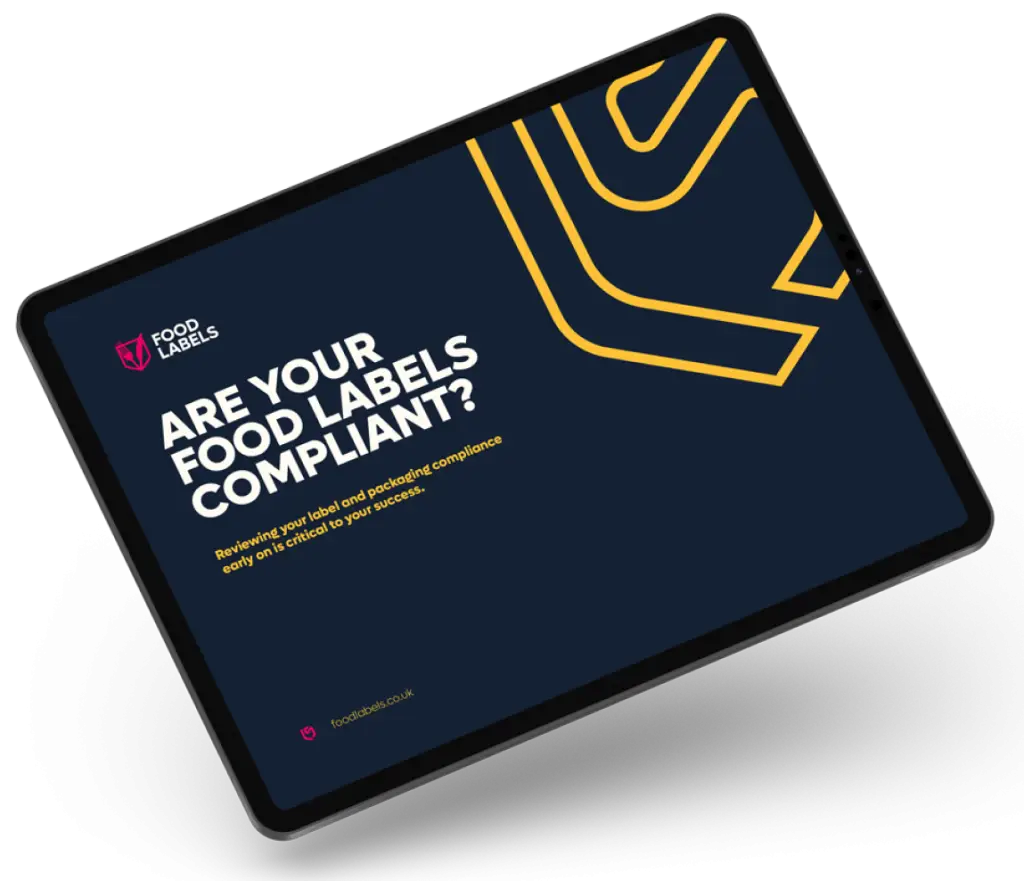A front-of-pack (FoP) label developed in accordance with this guidance will provide consumers with clear, standardised nutritional information to help them make informed food choices. The label will display the energy value of the product in both kilojoules (kJ) and kilocalories (kcal), ensuring that individuals can easily assess its caloric content. This information will be provided per 100 grams or millilitres, as well as per a specified portion of the product, making it relevant to different consumption patterns.
Additionally, the label will indicate the amounts of key macronutrients, including fat, saturated fat (also referred to as “saturates”), total sugars, and salt. These values will be presented in grams for a specified portion of the product, allowing consumers to evaluate their intake relative to their daily dietary needs. To enhance understanding, portion size information will be expressed in a way that is easily recognisable and meaningful. Instead of solely relying on weight measurements, the label may specify portions in familiar terms such as “¼ of a pie” or “1 burger,” making it more intuitive for consumers to visualise their consumption.
Another key feature of the FoP label is the inclusion of percentage reference intakes (% RI), which indicate how much of each nutrient and energy value a portion contributes to an average adult’s daily recommended intake. This contextual information helps consumers understand how a particular food fits into their overall diet.
To further aid consumer decision-making, the label will incorporate colour coding to represent the nutrient content of the food. Different colours will be assigned based on the levels of fat, saturated fat, sugars, and salt, making it easier to distinguish between healthier and less healthy choices at a glance. Companies may also choose to reinforce these classifications by incorporating descriptive terms such as “High,” “Medium,” or “Low” (HML), which correspond with the colours red, amber, and green, respectively. This additional labelling element enhances clarity and provides consumers with an immediate visual cue about the nutritional profile of the product.
By adopting this standardised labelling approach, food manufacturers can contribute to improved public health outcomes by encouraging more informed food choices and promoting greater transparency in nutritional information. The combination of numerical values, portion-based data, % RI, colour coding, and optional descriptors ensures that FoP labels are both accessible and effective in guiding consumers toward healthier eating habits. The FoP label design must not mislead or confuse the consumer.
Ensuring that consumers understand how to effectively use the voluntary front-of-pack (FoP) labelling scheme is essential for maximising its public health benefits. Research has demonstrated that when FoP labelling is applied consistently across a wide range of food products, consumers become more familiar with its format. This familiarity enhances their ability to interpret the information provided, enabling them to make more informed choices about their diet, manage their energy intake, and achieve a balanced nutritional intake.
A standardised FoP nutrition labelling scheme across the UK market would further strengthen consumer education efforts by providing clear, uniform messaging. Consistency in labelling not only increases public awareness but also helps reinforce key dietary principles over time. By ensuring that consumers encounter the same labelling system across multiple food categories, the likelihood of confusion is minimised. This allows individuals to confidently use the information provided to guide their food choices and maintain a healthier lifestyle.
Additionally, research and nutritional modelling have highlighted the substantial health benefits that even small, incremental changes in diet can produce. Improving dietary habits can significantly reduce the risk of chronic conditions such as obesity, heart disease, and diabetes. Furthermore, promoting healthier food choices through clear and accessible FoP labelling contributes to long-term public health improvements and can alleviate the economic burden associated with diet-related illnesses. The healthcare costs associated with poor nutrition are considerable, and an effective labelling system can play a crucial role in mitigating these expenses by encouraging healthier eating patterns.
By making nutritional information more transparent and user-friendly, a well-implemented FoP labelling scheme empowers consumers to take control of their health. It supports individuals in making better dietary choices, ultimately contributing to a healthier population and a more sustainable healthcare system.
Organisations seeking to enhance consumer awareness about nutrition labeling and healthier food choices have multiple communication channels at their disposal. By leveraging a combination of digital platforms, in-store engagement, printed materials, and interactive education, they can effectively reach a diverse audience and encourage positive dietary changes.
One of the most impactful ways to communicate with consumers is through digital platforms, including official websites, mobile applications, and social media channels. These tools allow for real-time updates, interactive content, and easy access to nutritional guidance. Websites can provide in-depth information on front-of-pack (FoP) labelling, dietary recommendations, and frequently asked questions, while mobile apps can offer barcode-scanning features that help shoppers make informed choices on the go. Social media platforms, such as Instagram, Facebook, and Twitter, offer an opportunity for organisations to share visually engaging content, including infographics, videos, and testimonials, making nutritional education more accessible and engaging for a broad audience.
In-store communication and promotions also play a crucial role in educating consumers at the point of purchase. Supermarkets and grocery stores can use shelf-edge labelling, posters, and digital kiosks to highlight healthier options and explain how to interpret nutrition labels. Promotional campaigns, such as “healthier choice” incentives, discounts on nutritious products, and guided shopping experiences, can further reinforce key dietary messages. Retailers may also host live demonstrations or partner with nutritionists to provide on-the-spot guidance to shoppers.
Printed materials, such as recipe cards, booklets, and magazine articles, offer another valuable means of communication. Recipe cards that showcase balanced meal ideas using healthier ingredients can inspire consumers to make better food choices. Booklets and brochures containing information on portion sizes, nutrient intake, and the importance of FoP labelling can be distributed in stores, healthcare facilities, and community centres. Articles in lifestyle and health magazines provide an opportunity to reach a wider audience by featuring expert insights, success stories, and practical tips for incorporating healthier foods into daily life.
For a more personalised approach, one-on-one or small-group sessions can be integrated into broader educational programs on diet and health. These sessions may be conducted as part of school-based nutrition education, workplace wellness initiatives, or community outreach programs. Healthcare professionals, such as dietitians and nutrition counsellors, can use these sessions to provide tailored advice, clarify misconceptions about food labelling, and help individuals develop sustainable, healthier eating habits.
By utilising a combination of digital tools, in-store engagement, printed materials, and direct education, organisations can maximise their outreach efforts and ensure that consumers have the knowledge and confidence to make informed dietary choices. A well-rounded communication strategy not only enhances consumer awareness but also contributes to long-term public health benefits by encouraging healthier eating patterns and informed decision-making.
Understanding and using the colour-coded front-of-pack (FoP) nutrition label can help consumers make informed choices and maintain a balanced diet. The label provides a quick visual guide using red, amber, and green colours to indicate whether a product contains high, medium, or low levels of fat, saturated fat, sugars, and salt. This system allows shoppers to assess the nutritional value of a product at a glance and make healthier decisions.
Seeing a red label on a product does not mean it should be avoided altogether, but rather that it should be consumed in moderation. Choosing fewer foods with red labels or reducing portion sizes of such foods can contribute to a healthier diet. Amber labels indicate that a food item is neither particularly high nor low in the given nutrient. Including foods with amber labels in a diet can help achieve balance, especially when paired with products that have green labels.
A green label signifies that the food is low in that specific nutrient, making it a healthier option for those aiming to limit their intake of fat, saturated fat, sugar, or salt. The more green labels present on a product, the healthier the choice. However, a balanced diet does not require exclusively green-labelled foods; a combination of green, amber, and even some red-labelled foods can ensure a well-rounded intake of essential nutrients.
Many products with front-of-pack labelling contain a mix of red, amber, and green indicators. When selecting between similar items, opting for those with more greens and ambers while limiting reds can help create a more nutritious diet.
In addition to colour coding, the % Reference Intake (RI) information on the label offers further detail about how much of an average adult’s daily nutrient intake a portion of food provides. For example, if a serving contains 50% of the RI for salt, it means that consuming this portion accounts for half of the maximum recommended daily salt intake. Being mindful of such values can help consumers make better choices throughout the day by balancing their intake of nutrients.
The % RI figures also enable more precise comparisons between products with similar portion sizes or nutrient levels per 100g/ml. By considering both the color-coded system and the detailed RI information, consumers can make more informed decisions to support a healthier and more balanced diet.














